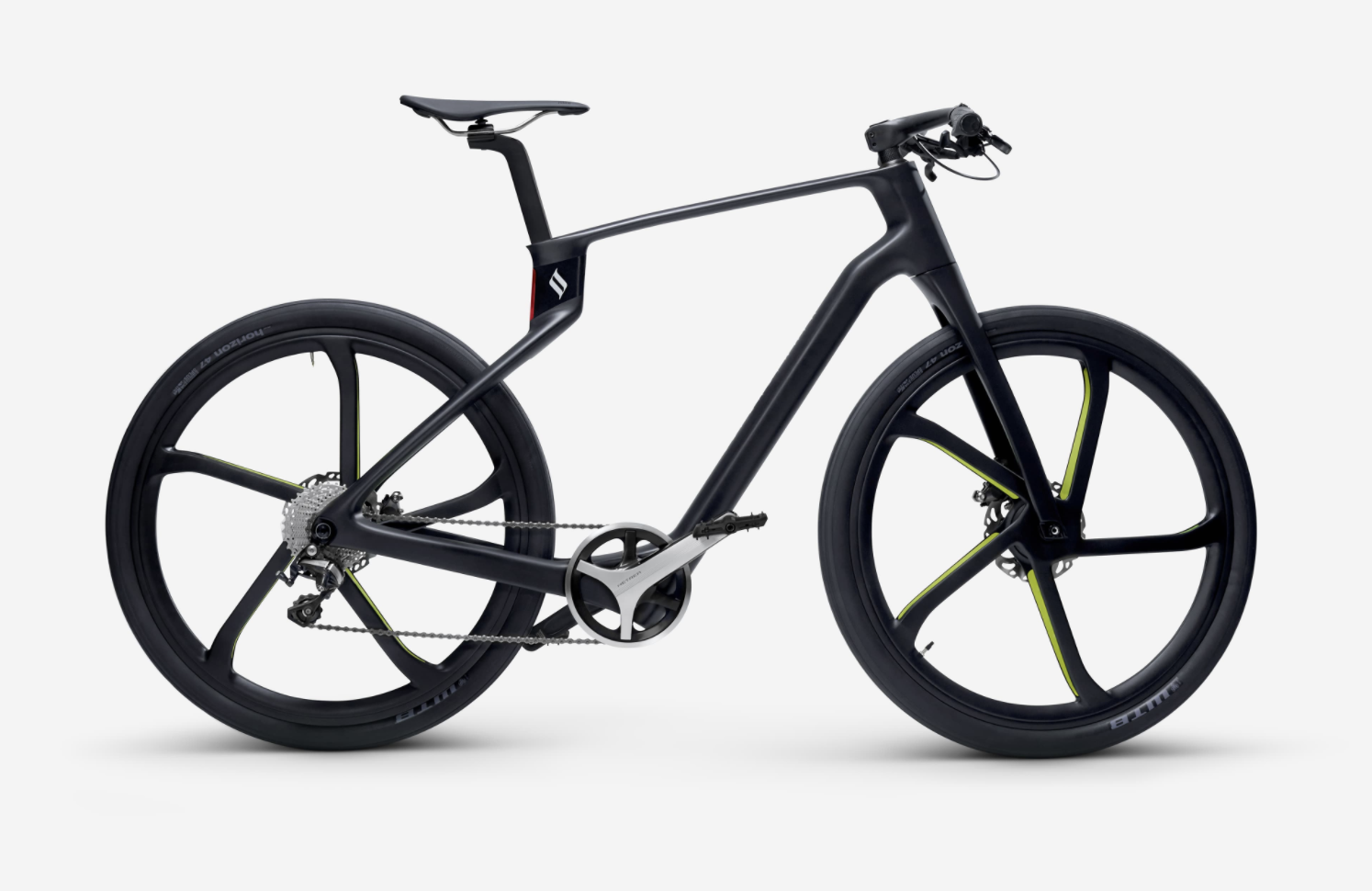Superstrata opens pre-orders on a pair of 3D-printed bicycles
There's one thing I can't stop thinking about every time I look at the Superstrata: Just how quickly the thing would get stolen. That's no knock against the bike itself - in fact, it's probably a point in its favor. If anything, it's probably just another in a long list of signs that I've been living in New York City for too long.
The Superstrata Ion is a $4,000 bike. But it's not just any $4,000 bike (I likely wouldn't be writing about it if it were). In addition to looking quite slick, the unibody bike is 3D printed from a single piece of carbon fiber material. The approach makes it possible for the company to essentially deliver a custom bike to the rider's body. And despite its seemingly hefty price tag, the Ion is still cheaper than most traditionally constructed carbon fiber bikes, which can cost as much as $12,000.
There are two models being offered under the Superstrata brand. There's the aforementioned electric Ion and the Terra, a $2,800 standard bike. Neither are quite a reality yet. Both are being offered up as pre-orders on Indiegogo (the campaign has already funded 5x its initial $100,000 goal) via Alabaster/Misfit founder Sonny Vu - a familiar name to anyone who has been following the consumer electronics space over the last several years.

Image Credits: Superstrata
The advantages of a 3D-printed bike should be pretty clear. As the company notes, it's capable of building the system to fit people from 4'7'' to 7'4'' (one assumes that's not an exact window and more a fun bit of symmetry, but you get the point). In all, the bike builders take 18 different measurements to create the unibody frame. That design lends an extra level of strength to the bike's frame, in spite of the fact that it weighs just under three pounds (for the nonelectric model). Superstrata told TechCrunch that this translates into more than 250,000 unique combinations. Once the bike is printed, a human delivers the final touches.
Superstrata is not just some new bike startup. It's a new brand under Arevo, the Bay Area-based additive manufacturing startup. Superstrata is meant to demonstrate Arevo's push into manufacturing as a service and composite additive manufacturing, Vu told TechCrunch.
To achieve this expanded focus, Arevo is building a print farm with a bunch of its systems in Vietnam, said Vu.
The idea is not to just print a thing and say, look what we can do,'" Vu said in a recent interview. Let's build the entire product from the name, colors, brand, type font, industrial design, user experience - the entire thing, B to C (business to consumer)."
Vu is betting that future customers will be hooked once they understand and can see for themselves how quickly Superstrata was created. The entire process from the drawing board to a production-ready prototype took about two months, Vu said. Much of that time was spent designing the printing processes that will allow for so much customization between each bike.
Vu is also aiming for Superstrata to be a high-quality product that can stand on its own, and the company leaned heavily on bike experts and designers to create both products. One of the most interesting - and possibly even controversial - design decisions is the lack of a seat tube.
Yeah, there's a bit of showboating on that design I have to admit," Vu said. Again, that's to show off our strength, because of course, we could put a seat tube in. The whole point is we can do the entire thing carbon fiber and support massive amounts of weight."
One important note is that as customized as these two bikes might be, this is not a closed system that will require the owner to stick with the handlebars and wheels. The bikes can use other wheels and components. Superstrata made this flexible because the company assumed most hardcore cyclists will strip it down to the body or fork anyway.
There is one other temporary upside. The price of both bikes have been reduced for early adopters through the crowdfunding campaign. The product is expected to start shipping in December.